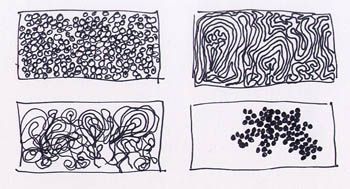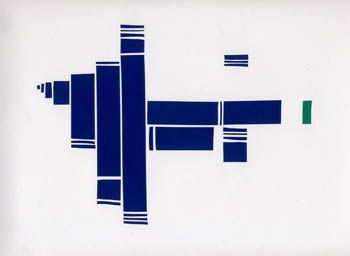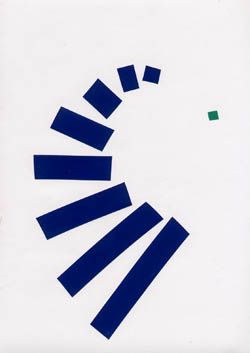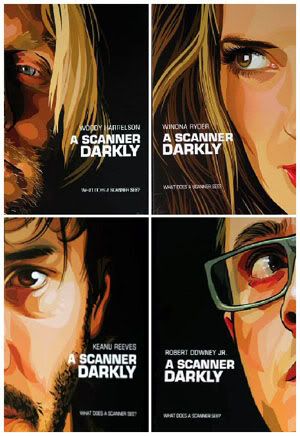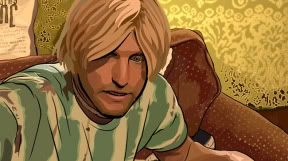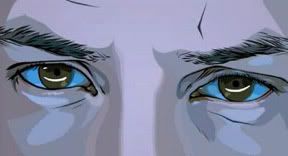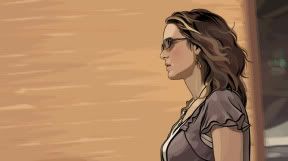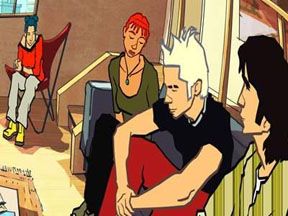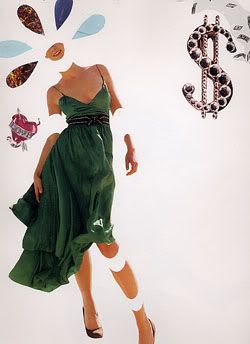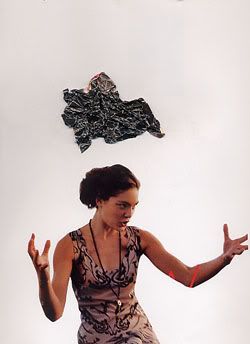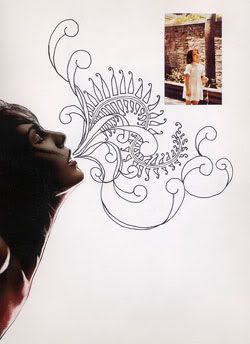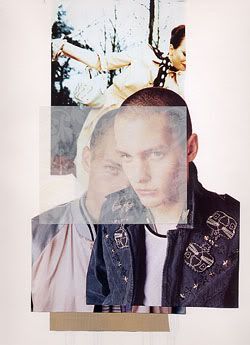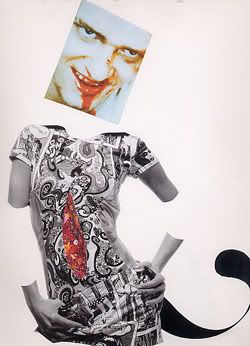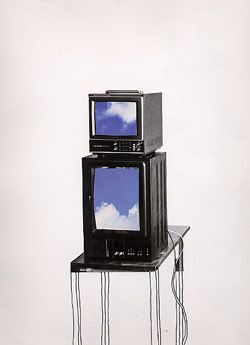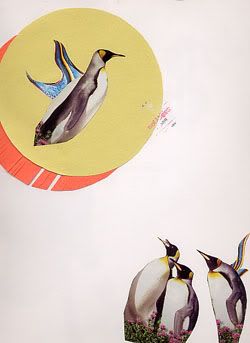(just letting you know that there are interesting links towards the end.)
While reading Michael Schmitz's article on Human Computer Interaction in science fiction movies, I must say that I didn't quite understand the term "interface metaphors" right away. This is funny because they are so common to us, ubiquitously present in every day computing. Eventually, it made sense to me, interface metaphors meant introducing a new interface by means of a form of communication and symbols which mass amounts of people are already familiar with. So for instance, as Joey has mentioned once before, a desktop computer isn’t really a desktop per se, since it isn’t a surface with physical working materials and four standing legs, it is a screen. However, its functionality is the same; it has folders, writing materials, calculators, etc... The computer desktop has become in many ways a replacement of the traditional desktop, an upgrade from it. Such is what new interfaces do.
When it comes to interface metaphors in science fiction movies, Mr. Schmitz goes through a multitude of titles spanning over half a century to show us how some have perceived the future throughout the years. Starting with a movie called “Metropolis” by Fritz Lang made in 1927. When it came out, digital technologies didn’t exist and mechanical industrialization was a predominant economic force. As it is noted by Mr. Schmitz, the movie centralizes on the mechanical aspect of innovation and points out a fault: the machines are run by humans in order to function. At its earliest, science fiction seemed not to be preoccupied with plausible realities, creating plots around technologies that are mapped with glitches and grounded on more fantastical avenues. Nevertheless, it’s interesting to note that circular motion is presented as the essence of mechanical function and technological advancement. The wheel has brought us many wonders and is evident around us to this day; bicycles, cars, clocks and come to think of it, compact discs are circles and their function involves a circulatory motion. Also, everything is huge in that movie whereas nowadays, everything tends to get smaller and smaller. Technology has taken a different path than what had been imagined. In fact, weren’t we supposed to have an array of silver wardrobe and fly around with jet packs by now?
Now that we’ve peeled this orange, let’s get to the good stuff. Mr. Schmitz has categorized various interfaces into; 1) “Neuro” Technology, 2) Identification, 3) Speech, 4) Displays and 5) other I/O interactions.
1) ”Neuro” Technology.
This refers to a technology that is connected to the brain. There are two movies in which this plays a role and both star Keanu reeves, funnily enough! The first is called “Johnny Mnemonic”, in which Keanu’s character, an agent, delivers sensitive data using a personal storage device, his brain. The way in which he transfers this data into is brain is through a connective wire he plugs into a socket underneath his ear. The other movie he was in; “The Matrix” also featured a character that connects and disconnects with a program. Although, unlike Johnny Mnemonic, it is not reality that prevails, the program is the sophisticated one. This blurs the line between reality and cyberspace. How do we know which is actually real? That’s what it had me thinking anyhow.
2) Identification.
I find it interesting that technology is sort of founded on individualization, preoccupied with pin pointing every single spec of human existence on the earth. This, I believe is what defines its advancement. But on the flip side of the coin, lack of privacy becomes an issue. Constantly being watched by a sort of sleepless surveillance can be bothersome. Kind of like in George Orwell’s “1984”, big brother is watching us. Identification is evident in science fiction movies, recognizing an individual by means of their finger prints, hand prints, eye scans and breath. One biometric identification system that seems more cult-like than futuristic is that of having a diamond-like implant in a person’s palm that changes color throughout various stages of their life and kills them at the age of 30. This so-called perfect society in “Logan’s Run” whose only purpose is enjoyment sounds like a mass of ticking time bombs to me. I don’t think I’d like this movie. Nevertheless, identification is in fact part of current technology, replacing i.d cards and passports in certain country airports, where a simple eye scan avoids all the hassle. I’ve also seen fingerprints already being used for home computer security. Biometric identification certainly is a step forward but only if it is used responsibly. Hopefully it won’t reach a level of utter invasion as it does in “Minority Report” and “Gattca”.
3) Displays
There have been a few pioneers in science fiction movies when it comes to displays. As Mr. Schmitz mentions, displays are inherently visual and that’s why they naturally have found their place to evolve in movies. Namely, in “Total Recall”, displays are used in every day life, as common as flat screen pcs and cordless mice are to us today. Displays also arise in the “Star Trek” series. Coincidentally, a technology explored in the series was being researched in real life. This is a good example of how more recent science fiction movies/series have become much more innovative than in past years. Also, displays begin to take a more 3 dimensional form in movies like “The Matrix”, “Minority Report” and “Star Trek: The Next Generation”. Holograms for instance seem to turn something internally dynamic into something externally and visually dynamic. As humans when we interact with things, they occupy a presence. Displays help us communicate with interfaces eye to eye.
4) Speech.
Speech plays an important role in intelligent technologies. Perhaps in a symbolic sense, it is a way to retain the fact that we are above them because they didn’t appear out of thin air, a collective had to think it all up. Also it frees our hands from manipulating the interface allowing us to accomplish various tasks by means of sentences. Computers are capable of withholding a magnificent amount of information that is to our disposal. I truly enjoyed that scene in “The Time Machine” where the traveler goes forward in time and is guided through a library by an avatar. I agree with Mr. Schmitz when he says this creates an environment of augmented reality.
5) Other I/O interactions.
Finally, in speaking of augmented realities, there are numerous examples of this in a multitude of science fiction movies. In “Johnny Mnemonic” and “Minority Report” hand gestures are used in interfaces to open, close and move things around. The interaction becomes much more fluid and somewhat tactile. This actually reminds me of a video I saw a little while ago where and interface has been created to be used with tiles that interact with each other. Thanks to re-locating the site I found it on, I found the link to the video as well, take a look!!
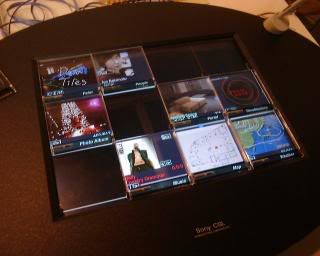
{link to movie}
for more go {here}.
I’m surprised the article didn’t mention anything about “I Robot”, a movie that came out quite recently. I think it is a great example Human Computer Interaction where there is an interdependence between human and machine. But as we see in many science fiction movies, nothing is perfect. While searching google for HCIs, I came across an electronic artist called Laura Maccary who’s work brought up technology’s dichotomy. Have a look-see :
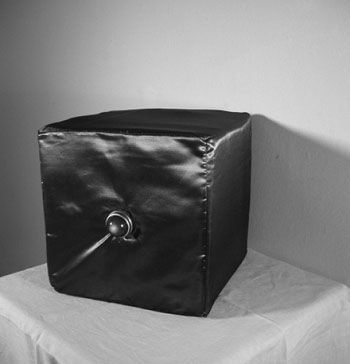
{link}
ARTIST: Laura MacCary
TITLE: Huggable HAL
MATERIALS: Electronics, glass, fabric, foam
DIMENSIONS: 9 1/2" x 9 1/2" x 9 1/2"
DATE: 2005
DESCRIPTION AND STATEMENT
This HAL references the HAL 9000 computer from the movie 2001. Each HAL is a cube or block about ten inches on a side, with a glowering red eye that lights up when you hug it, but the eye fades unless you keep hugging. Ironically, hugging them forever would eventually run their batteries down, sort of a damned if you do, damned if you don't kind of thing.
I'm thinking about our relationship with technology, how intimate it is, how we anthropomorphize, and as the movie points out, how technology is a double-edged sword. For me there is some conflicted pathos in hugging or consoling this murderous/helpless device. Who is manipulating whom?
To conclude, the innovations that thave been brought to our attention by science fiction movies and every day technology ressearchers are constantly going to try to transform our lives into something more and more digital. Question is, how digital are we willing to be?
